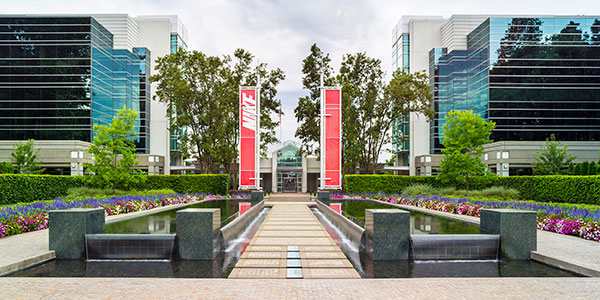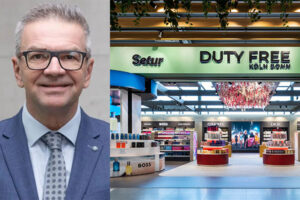By Gary Burrows
It is an undeniable truth that digital engagement has had a massive boost over the past two months, with a 74% rise in online shopping1. It seems unimaginable today that retailers have not embraced e-commerce, yet the fact is that many retailers, large and small, are still way behind the digital curve. Consider Irish fast fashion retailer Primark, who decided not to have an e-commerce platform, and who are losing 650 million pounds per month in revenue2. By the time the world re-opens its shop doors, that will be over one billion pounds. I am not saying that all of those losses would have been mitigated by an e-commerce channel, but a significant proportion would have been–and more importantly, their customers might not be so disconnected from the Primark brands. The CEO of Nike recently announced that there had been a bounce back in China, however their physical store losses where mitigated by Nike’s excellent direct-to-consumer e-commerce, providing consistent online sales during the lockdown.

The recent online buying boom has been largely driven by household essentials, pharmacy items, grocery and foodstuff. According to Rakuten Intelligence there was a 210% increase in grocery shopping online during March 2020 on a YOY basis3. The other side of this boom also includes fitness equipment, toys, electronics and games, and alcohol which has seen a 400% increase in curbside pick-up and home delivery. The purchasing is relatively predictable as trends are influenced by news media- panic buying to protect the family whilst buying computer games and activities to keep stuck-at-home kids busy. The sports equipment category increase is a direct reflection of the guilt created by the alcohol consumption. This trend is based on the enforced lockdown situation and, yes, this is a less than normal situation.
Quickly adapting to change
Human behavior adapts to the external inputs that arise, therefore it’s easy to track and just as easy to predict. As a collective average, we don’t like change, however we adapt to it very quickly out of necessity. It’s been said that if you change a person’s pattern of behavior three times, then that pattern will stick. Our behavior has changed more than we realize during this lockdown and the link that has driven this change is sketchy at best. Who could have predicted that a global increase in digital spending would be caused by a physical virus? In 2019 the average online sales as a percentage to total sales was around 11% although much higher in mature markets like the UK at 19% and less in emerging markets. This has followed a predictable growth path of economic stability, distribution of revenue, steady introduction of innovation etc. 2020 is going to see that evolutionary leap, as human shopping behavior gets used to online grocery shopping, curbside pickup, home deliveries, and all of the others. Some of this behavior change will be sticky as we get used these new ways. We will also abandon poor quality, high friction and frustrating web sites that drop out, lose your order or cannot complete a transaction at the end. This stickiness will only increase as technology improves and retailers improve the quality of their sites and add services, logistics and systems that make it even easier to shop online.
The reality is that digital just received a steroid shot in the arm and has had an evolutionary leap which has increased its market share for good. Many established big brand names have fallen by the wayside during this time especially department stores whilst others got stronger. The best market improvements usually occur when under stress and outside of our comfort zone. Diversifying supply is important. Take Staples, for example, a traditional office supply company that is lean and agile enough to adapt and evolve quickly. As a result, they are now selling groceries and perishable products. Companies like Walmart are big winners during Covid-19, as they have an excellent e-commerce channel, store pickup programs and logistics systems. Unfortunately, great fashion names like Animal have closed up shop, as have many others, like Debenhams who have entered bankruptcy measures.
Requirement for a merged ecosystem
On the positive side the vacancies created by Covid-19 will be filled in some way, with social and cultural activity, leisure and entertainment, plus the expectation that online pureplay retailers will expand into the physical realm–especially given a predictable glut of low rent space. Now is the time to do this and the opportunities will be many and varied. Amazon and Alibaba are storming it right now, however they have begun to understand what we already know, that people love people and we have a biological, emotional and cultural need to be together, socialize, interact and feel part of something bigger than oneself.
It is easier to convert a physical customer into a merged digital and physical customer (a.k.a. omnichannel), rather than a digital to a physical. Having said that, there is a growing and increasingly urgent customer requirement for a merged ecosystem, which is why Dubai Mall have just opened a virtual mall, with their JV partner Noon. This is a virtual digital copy of Dubai Mall and will begin to add services and offers to this enabling channel. With Alibaba buying into Auchan and starting to develop its own malls, and Amazon opening stores within Nordstrom. It’s clear that the best and most creative minds in retail believe that we need a merged digital and physical retail singularity.

As we move into a post Covid-19 world, with malls and meeting places opening from China to the Middle East and Central Europe, consumers are waking up to a new reality. This includes restrictive and protective measures, social distancing, limited access, increased booking ahead requirements, pedestrian traffic flows, and physical barriers at till points. It is expected that it will be two months after malls and meeting places re-open that visitor numbers and dislocated international supply chains begin to normalize. In a recent Reuters news article5 Ingka malls advised that they are back up to 70% of previous visitor numbers three weeks after re-opening. It will take eighteen months for mall owners and operators to fully recover from the Covid-19 pandemic, however what does recover actually mean? In reality it means that it will take eighteen months to adapt and evolve to the changes demanded by new consumer behaviors, new ways of working, operating and engaging. This will include how mall and meeting place owners and operators lease a mall and what that lease structure looks like. Again, merging the digital and physical is a likely way forward, especially if digitally native retailers are stepping into the physical world.
We have to consider how malls and meeting places will be impacted, especially food and beverage, leisure and entertainment and event activity. The latest advice in some countries for restaurants is only 25% of normal capacity, which makes the size and nature of the unit financially untenable. Is this just short term, or are there long-term reductions? If so, then the restaurants will downsize and the space repurposed. The same is true of cinemas, bowling alleys, family entertainment centers, concert venues, gyms and leisure centers, water parks etc. How will this fair in a post Covid-19 world? It’s likely that testing measures will mitigate risk and disclaimers will become a feature of everyday life, if you want to carry out group or close contact activity.
Increased use of augmented reality
The use of technology in the form of artificial intelligence and personalized digital interactions will be embraced by malls and meeting places, not only for customer service provision, but also including heat mapping of customers to detect the infected. Use of contactless payments has already increased by 40% and the transaction limit has been increased to 45 pounds in the UK, driven by consumer behavior. Use of augmented/virtual reality will increase, in order to try fashion items, and even blue lights in changing rooms, to kill bacteria. Increased self-check-out, the Amazon Go technologies, and the new radar systems that remove the need for a checkout, that requires human interaction. In the short term we could see the theme park type of “fast pass” for really busy stores, as mall owners and operators restrict queuing in malls. Car parks will also be limited and more frictionless payment systems will become standard.
Mall and meeting place owners and operators will have to retrain their staff quickly and increase the medical provision, identification and management of situations. Security staff will all have to become proficient at dealing with outbreak emergencies, isolation of infected with specialist rooms dedicated for this. Increased numbers of security to limit visitor access at a given point, crowd control and social distancing enforcement. Cleaners will have to man the toilets and control customer flows, which is not normal for them to manage customers. New protective and preventative equipment will become the norm and deep cleans will increase, as will service charge costs.
The malls and meeting places were evolving quickly before this pandemic. However, there was still resistance to change, as is human nature. In a post Covid-19 world, embracing “digital first” is not just a wishful saying; It’s a fundamental and basic requirement of a smart mall and meeting place. It is surprising to have to go through a high friction process of inputting personal details and getting a verification code in a text message, to get free Wi-Fi. Mall and meeting place owners and operators need to assess their assets and understand where the gaps are in their digital ecosystem and put in place budgets to meet customer expectations. Retailer tenants should be demanding this. Both retailers and mall owners need to share data now and remove these illogical barriers to trade collaboration. If a retailer is on a turnover rent, then transactional data sharing with the landlord is a basic expectation. The more that data is shared, the better that a true partnership can exist. When this happens, the customer will benefit and will finally be put ahead of the historical distrust between landlords and retailers/operators.
The future is already here
If we do consider the mall and meeting place as one ecosystem, meaning the social, cultural and community heart, then the tenants and landlords need to act as one, in order to provide the smart space that customers demand. Tenants also have responsibility to pull their weight and each should be assessed based on their attraction ratio. Does every tenant in the meeting place have a gamified, e-commerce, omni-channel business that adds to the overall ecosystem? If not then they are a weak digital link in the matrix and need to up their game. Some of the local or single store tenants may not have the capacity to deliver this, which is why landlords need to create a retail singularity even if that means landlord is providing and enabling a fully merged digital and physical customer experience and journey for tenants. Part of this is the digital mall or virtual mall, open 24/7 and backed by a smart logistics system that has last mile logistics at its core.
It has been said that the future is already here, it’s just unevenly distributed. Adoption of digitally smart and enabled customer experiences is spotty at best. The best outcome in our industry from this devastating pandemic would be to finally give the customer what she wants: a seamless, enriching customer experience in a world of retail singularity.
1. ACI Worldwide
2. Nasdaq article, published March 23, 2020 (RTT News)
3.Digital Commerce article by James Melton, March 19, 2020





